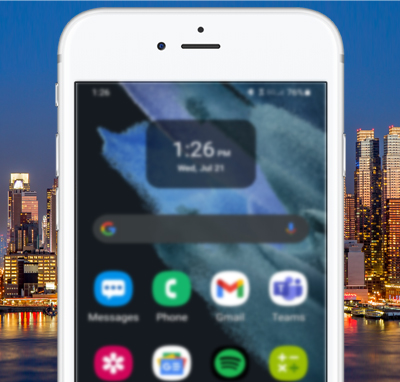Most patients over the age of 40 suffer from declining reading vision

Most patients over the age of 40 suffer from declining reading vision
If you’re nearsighted and over the age of 40, you’ve probably noticed that when you’re wearing your contact lenses or glasses for distance correction, your reading vision suffers, and that when you remove your correction, your reading vision improves. This reading vision problem is most likely due to presbyopia (Greek for “old eyes”), a condition where the lens of the eye – which helps focus on smaller objects – stiffens with age, progressively losing its focusing power.

Using glasses and contact lenses to correct both distance and near vision can be an awkward experience

Using glasses and contact lenses to correct both distance and near vision can be an awkward experience
This distance and near vision trade-off means you may need to wear bifocals to see near and far, or to use reading glasses over your contact lenses or, as in the picture, to remove your distance correction when you want to read. Or possibly better yet, you may want to consider a laser vision correction solution called MonoVision, which could help reduce your dependency on glasses and contact lenses for both your distance and near vision needs.

How does MonoVision work?

How does MonoVision work?
In MonoVision, Dr. Hyver employs a laser eye surgery procedure such as LASIK, SMILE or PRK, to correct one eye for full distance vision, and the other eye for reading vision by producing a targeted nearsighted prescription in the reading eye. MonoVision enables patients to switch focus depending on the vision objective. For example, on a golf course, you can line up a putt or track the ball in flight using primarily your distance eye, and then review your scorecard using primarily your near eye.
Schedule your free consultation with Dr. Hyver to see if you qualify for MonoVision

Schedule your free consultation with Dr. Hyver to see if you qualify for MonoVision
Even though many of our patients over the age of 40 elect and enjoy their MonoVision, it does have limitations, as patients may still need to wear glasses, for example, to read very fine print and to drive at night. So talk to Dr. Hyver at your consultation to learn more. Patients who do qualify at their consultation will typically attend another exam during which we’ll show you how MonoVision actually looks so you can gain further experience before making a decision on your treatment.

Schedule your free consultation
with Dr. Scott Hyver at any
one of our three Bay Area offices.
To schedule your free consultation with Dr. Hyver, or if you have any questions, please complete the following:

